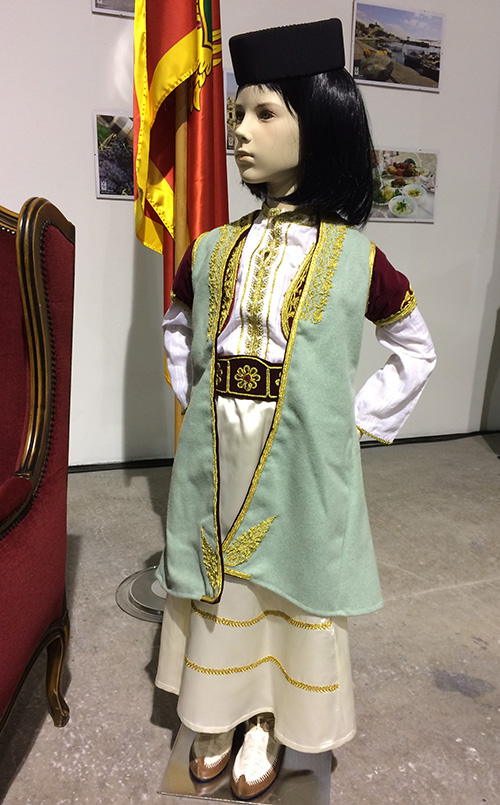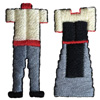 Traditional clothes are those garments worn in a certain country or region for centuries. These outfits were handmade in the past, and practically every family sewed, wove, embroidered, knitted, or otherwise created their everyday and festive clothing. Of course, children also needed something to wear, so kid folk costumes were made along with the outfits for adults. But usually, we know less about traditional children’s wear of a foreign country because these garments are often less elaborate and ornate, there are fewer survived samples in museums, etc. So, let’s look at some national kid costumes – believe us, such outfits are adorable and worth your attention.
Traditional clothes are those garments worn in a certain country or region for centuries. These outfits were handmade in the past, and practically every family sewed, wove, embroidered, knitted, or otherwise created their everyday and festive clothing. Of course, children also needed something to wear, so kid folk costumes were made along with the outfits for adults. But usually, we know less about traditional children’s wear of a foreign country because these garments are often less elaborate and ornate, there are fewer survived samples in museums, etc. So, let’s look at some national kid costumes – believe us, such outfits are adorable and worth your attention.
This is one of those countries that value their folk culture and folk attire highly. Scottish boys wear kilts (traditional pleated skirt-like garments) and all the accessories used with a kilt. Scottish girls wear women’s kilts (they differ a little from male kilts) or dresses made from certain tartan fabric. Tartan is a checkered woolen cloth, and traditionally, every Scottish clan had their own pattern, so they dressed in clothes made only from one type of tartan. Girls in Scotland have not as strict rules for the apparel as boys and men do.
Japanese folk attire is a kimono. Children also wear tiny kimonos for special occasions, and their robes are practically as intricate and bright, as adult’s kimonos. Traditional kimonos for boys and girls differ, as do male and female kimonos. Girls even use traditional socks, footwear, hairpins, and bags.
Peruvian traditional kid costumes are extremely bright and colorful. Same as the adults’ national outfits. They are hand-woven from alpaca wool or other types of wool and richly adorned with geometric patterns or animal symbols, etc. Peruvian children’s folk ensembles are tiny copies of clothes used by grown-ups. These garments are usually warm because the climate in Peru is mostly cold, especially in the mountains.

The Native American children also wear garments similar in cut and design to the ordinary folk clothing of their region. They are made from leather, fur, and other natural materials, may be beaded, quilled, etc. But the Native American kids use these outfits only as festive wear.
Inuit kids originally used very warm parkas and trousers made from fur, snowsuits, and other garments and accessories meant to protect from the cold, snow, and rain. Gloves and shoes were made from waterproof sealskin, as there were no membrane fabrics 100 and more years ago. Today, such furry clothes are rarely used by Inuit people even as festive clothing.
Ukrainian children in the past wore tiny full sets of clothing for festive occasions (some girls even had jewelry) and, usually, only long shirts as daily wear. The traditional Ukrainian attire always includes an embroidered shirt, along with various other garments. Kids had their own small embroidered shirts made from linen, hemp, or cotton fabric. In the modern time, children often wear an embroidered shirt with Western-style clothes (skirts, pants, jackets, etc).


Indian boys and girls wear beautiful traditional clothes. Festive garments are almost as ornate as adults’ outfits. The most common attire for girls are sari and lehenga choli, for boys – kurta pajama. Wealthy Indian children wear so intricate tiny replicas of traditional garments, with such shiny details and beautiful trimmings, that sometimes an adult would envy their folk attire.
Not every German region estimates its clothing traditions as thoroughly as Bavarian people. Bavarian boys use folk leather shorts of a certain style called “lederhosen”. Bavarian girls wear dirndl dresses. Their outfits are common for the national holidays and celebrations and are usually made with great attention to detail.


Tunisian kids may dress very festively and costly for special occasions. Tunisian girls even use plenty of gold jewelry, pearls, and gems in their outfits. The kids’ folk garments, of course, are very modest, some girls have their heads covered with veils or special headdresses. Tunisian boys wear tiny loose robes and fez hats.


Festive national costumes of Montenegro used by kids are lovely. They’re ornate, adorned with gold embroidery. The cutest items of Montenegrin children’s folk dress are accessories – shoes, socks, and hats made just like adults’ pieces but tiny.




